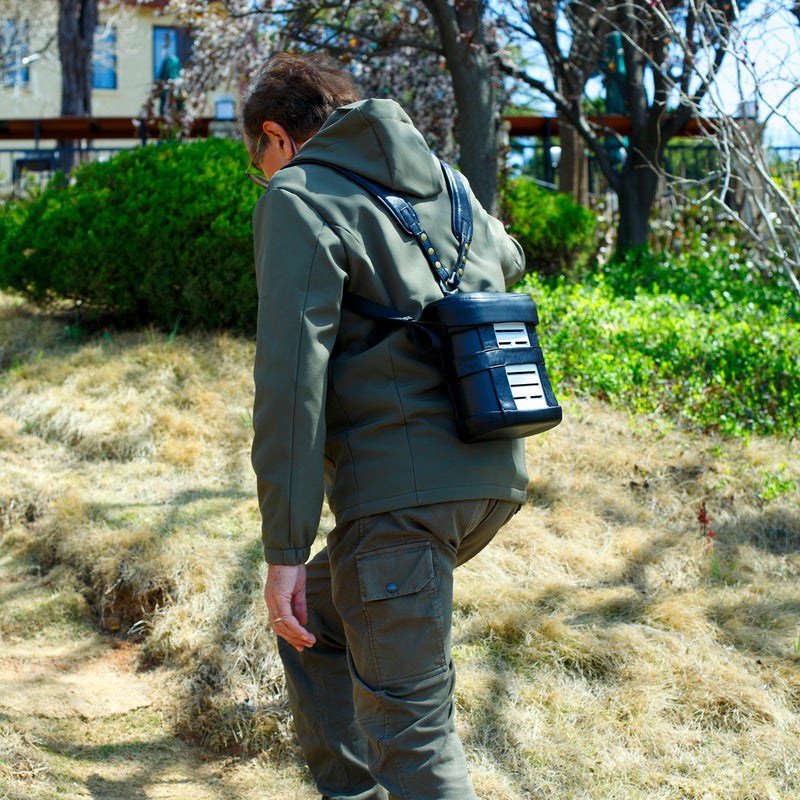The Evolution of Lightweight Respiratory Equipment: From Bulky to Sleek Designs
Cuerpo
Respiratory equipment has come a long way in terms of design and functionality. Over the years, there has been a significant evolution in lightweight respiratory equipment, transforming it from bulky and cumbersome devices to sleek and efficient designs. This evolution has revolutionized the way respiratory conditions are managed, providing patients with greater comfort, mobility, and improved quality of life.

The Need for Lightweight Respiratory Equipment
Before delving into the evolution of lightweight respiratory equipment, it is important to understand the need for such advancements. Respiratory conditions, such as chronic obstructive pulmonary disease (COPD) and asthma, can severely impact a person's ability to breathe. Traditional respiratory equipment, such as oxygen tanks and ventilators, were often heavy and restrictive, limiting the mobility and independence of individuals with these conditions.
Recognizing the limitations of bulky respiratory equipment, researchers and engineers began exploring ways to develop lightweight alternatives that would provide the necessary support without compromising on comfort and mobility.
The Early Innovations
The early innovations in lightweight respiratory equipment focused on reducing the size and weight of existing devices. For example, portable oxygen concentrators were introduced as a more convenient alternative to traditional oxygen tanks. These devices utilize advanced technology to extract oxygen from the surrounding air, eliminating the need for heavy tanks and allowing patients to move freely without the burden of carrying additional weight.
Similarly, advancements in materials and design led to the development of lightweight ventilators that could be easily worn or carried by patients. These ventilators provided continuous respiratory support while minimizing the physical and psychological impact on the user.
The Integration of Technology
As technology continued to advance, lightweight respiratory equipment began incorporating innovative features to enhance functionality and user experience. One notable development was the integration of wireless connectivity and smart sensors. These features allowed healthcare professionals to remotely monitor patients' respiratory parameters and make adjustments as needed, improving the efficiency of treatment and reducing the need for frequent hospital visits.
Furthermore, the integration of advanced algorithms and artificial intelligence enabled respiratory equipment to adapt to individual patient needs. For example, ventilators could automatically adjust the airflow and pressure based on real-time data, optimizing therapy and reducing the risk of complications.
The Future of Lightweight Respiratory Equipment
The evolution of lightweight respiratory equipment is an ongoing process, with continuous advancements being made to further improve patient outcomes. One area of focus is the development of wearable respiratory devices that seamlessly integrate into everyday life. These devices are designed to be discreet, comfortable, and easy to use, allowing individuals to manage their respiratory conditions without drawing attention or hindering their daily activities.
Another promising direction is the exploration of nanotechnology in respiratory equipment. Nanomaterials have the potential to make devices even lighter and more efficient, while also offering additional benefits such as improved air filtration and antibacterial properties.
In conclusion, the evolution of lightweight respiratory equipment has transformed the way respiratory conditions are managed, providing patients with greater comfort, mobility, and independence. From the early innovations in reducing size and weight to the integration of technology and the future possibilities of wearable devices and nanotechnology, the advancements in this field continue to revolutionize respiratory care. With each new development, the focus remains on improving patient outcomes and enhancing their overall quality of life.






Comentarios